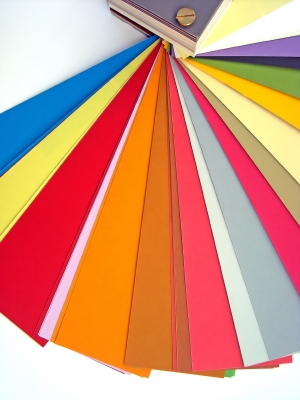One of the thorniest questions I used to get as a recycling educator for the awesome grassroots recycling company EcoCycle in Boulder, Colo., was why ‘astrobright’ papers weren’t recyclable. You know this stuff: the super-dyed paper used by everyone from bands to Girl Scouts to make posters announcing their bake sales and death-metal guitar battles. It’s often bright orange, but also comes in every other shade imaginable.
The dye used to make these papers is so bright that it has the effect of washing your white clothes with one dark blue T shirt and are hence called ‘beater dyes’ — they beat the paper recycling process and must be sorted out of the paper stream by recycling facilities and then burned or landfilled.
I called my pals at EcoCycle recently to see if the story has changed, but alas, it has not. We should all avoid their use. Bright yellow manila envelopes fall into the same category, I’m afraid. But what EcoCycle is telling its curbside customers and dropoff center users is to compost these papers with leaves and grass clippings. Better than nothing!
What to avoid: any brightly colored paper that is dyed throughout: tearing part of it will expose a white middle in papers that are OK to recycle. Pastel colored paper is the one exception, so use this for your posters.
In a country like the US producing an estimated total of 413 million tons of garbage generated annually, with only 28.6 percent recycled and composted, 6.9 percent combusted in waste-to-energy plants, and 64.5 percent landfilled (see BioCycle magazine’s 2008 State of Garbage Report), we should do all we can to ensure that the paper we use (post consumer recycled, please!) and recycle is the right kind.



